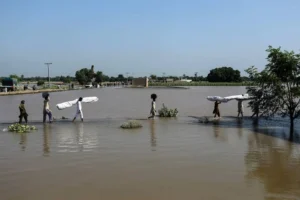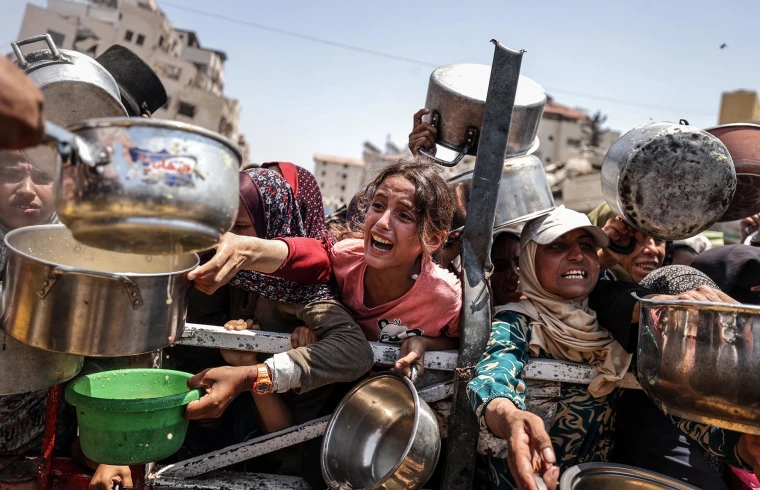Gaza in Crisis has become more than just a headline it is a stark reality that the United Nations (UN) food agency is now warning about. Following a recent visit, the World Food Programme (WFP) chief declared that the territory is at a “breaking point,” with millions of civilians facing food shortages, displacement, and worsening humanitarian conditions.
As international aid trickles in slowly and conflict continues, the situation in Gaza is described as catastrophic, with concerns of famine mounting daily.
UN Chief Raises Alarm Over Gaza’s Breaking Point
After touring parts of the devastated enclave, WFP Executive Director Cindy McCain warned that the humanitarian situation cannot withstand further delay in aid operations. She confirmed that Gaza in Crisis now represents one of the world’s most urgent humanitarian emergencies.
McCain highlighted that families are living on minimal food, with some forced to survive on one meal a day or less. Children, who form almost half of the population, are experiencing acute malnutrition, while hospitals struggle to provide basic medical support.
Her words served not only as testimony but as an urgent call to the international community: without immediate support, Gaza risks “a humanitarian collapse unlike anything in recent history.”
Daily Life Under Siege
Inside Gaza, the stark reality is visible everywhere. Displaced families overcrowd temporary shelters that lack clean water, sanitation, and food. Bakeries that once fed thousands are running out of grains, while aid convoys face long delays at border crossings.
Residents describe an environment where food insecurity dominates every aspect of life. Parents skip meals to feed their children, while children suffer from chronic hunger and anxiety. For ordinary people, the phrase Gaza in Crisis is not an abstract term—it defines their everyday struggle to survive.
Food Shortages and Humanitarian Challenges
The UN food agency reports that warehouses across Gaza are nearly empty. Transportation routes remain unsafe due to ongoing hostilities, making aid deliveries inconsistent and dangerous. Additionally, fuel shortages severely limit the ability of humanitarian organizations to store and distribute supplies.
Humanitarian experts warn that if access does not improve soon, extreme hunger will spread rapidly. “The situation is deteriorating by the hour,” one relief worker commented, underscoring how Gaza in Crisis is no longer looming it is happening right now.
The Impact on Children and Vulnerable Families
Children remain the most vulnerable group in this crisis. Malnutrition rates have doubled in recent months, and thousands are showing symptoms of stunted growth and weakened immunity. Doctors warn that without emergency intervention, the long term effects on a generation of Gaza’s children will be irreversible.
Mothers are unable to find infant formula, and many are forced to feed infants diluted substitutes that lack nutrition. Aid groups stress that children are bearing a psychological toll as well, suffering from trauma alongside hunger.
At international forums, health experts keep reminding policymakers that Gaza in Crisis is essentially a crisis for children above all.
Global Response and Calls for Action
World leaders and humanitarian organizations are calling for immediate solutions, including the establishment of humanitarian corridors that allow safe and uninterrupted aid distribution. The WFP has urged donor nations to increase funding and provide logistical support.
While some aid has entered Gaza, it is far from enough to meet the needs of the more than two million residents affected. Several governments have pledged food assistance, but logistical challenges and political barriers continue to slow progress.
The UN warns that without collective global pressure and cooperation, Gaza in Crisis will deepen further in the coming weeks, pushing the territory into total famine conditions.
Why the Situation Matters Globally
The worsening conditions in Gaza are not an isolated humanitarian challenge. Instability in this region poses risks that extend internationally, including further displacement of civilians, heightened regional tensions, and the spread of food insecurity in nearby areas.
Aid agencies argue that supporting Gaza is not just a moral responsibility, it’s also a step toward regional stability. When basic human needs are unmet, conflict intensifies, making diplomatic and peace efforts even more difficult.
Thus, resolving Gaza in Crisis is more than an act of charity; it is an urgent global priority with far-reaching consequences.
Path Forward
To prevent famine and systemic collapse, humanitarian experts recommend immediate priority actions:
-
Full humanitarian access: A ceasefire or negotiated pause to allow aid delivery.
-
Funding scale up: Countries must meet WFP’s emergency funding appeal without delay.
-
Infrastructure support: Ensuring fuel, electricity, and safe transport for aid distribution.
-
Child-focused interventions: Nutritional supplements and trauma care for young children and mothers.
By addressing these urgent needs, the global community can prevent an even deeper catastrophe from unfolding.
Conclusion
The UN’s warning underscores the grave reality: Gaza in Crisis is at its breaking point. Food is scarce, shelters are overwhelmed, and millions of lives are at risk. If decisive action is not taken soon, the crisis could escalate into famine, costing countless lives and destabilizing an already fragile region.
History will judge whether the world acted in time or allowed Gaza’s cries for help to fade into silence.

















